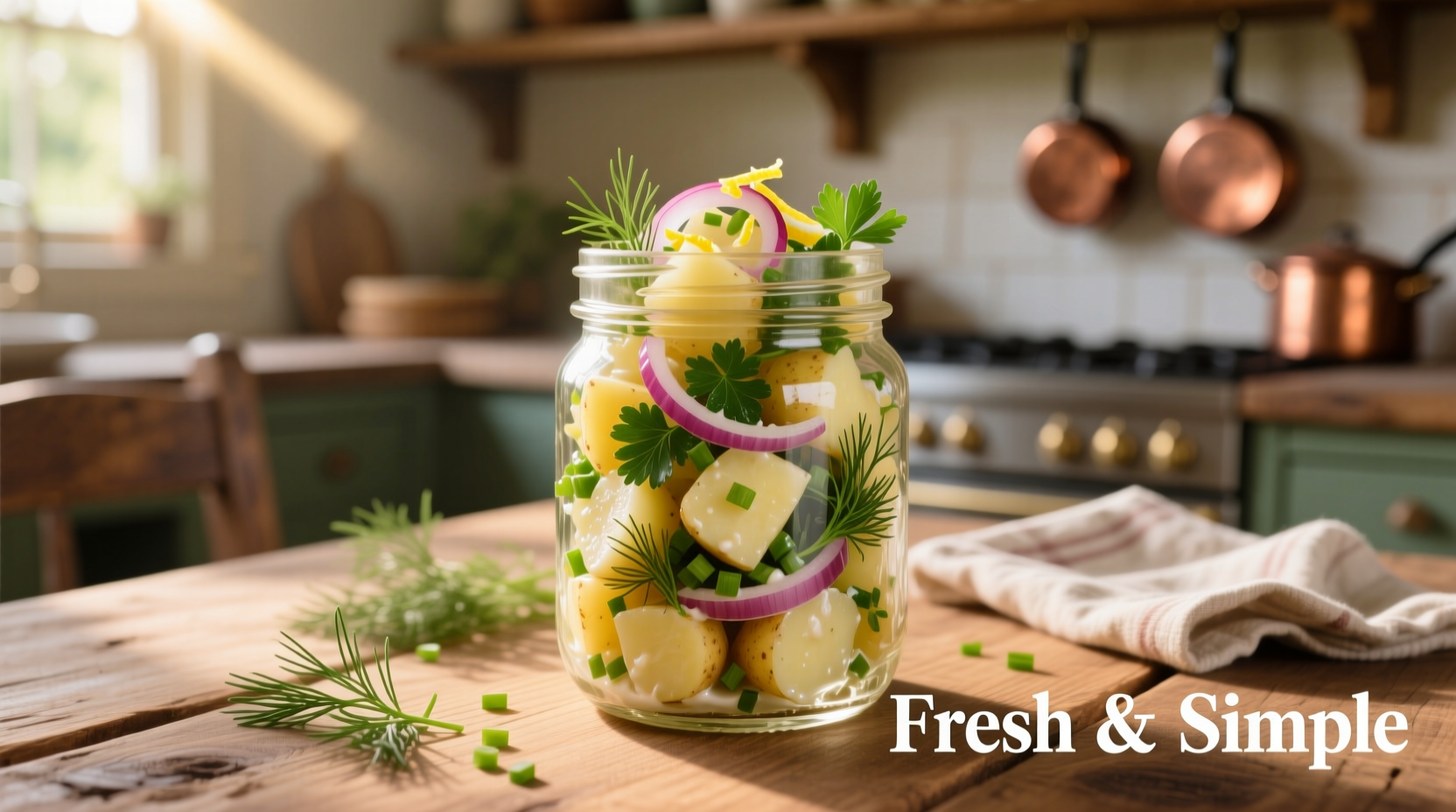Nothing ruins a summer picnic like foodborne illness from spoiled potato salad. As a food safety specialist with years of experience in culinary science, I've seen how improper storage turns this classic side dish into a health hazard. Understanding the precise shelf life of potato salad isn't just about avoiding waste—it's critical for protecting your family's health.
Why Potato Salad Spoils Faster Than You Think
Potato salad occupies a dangerous zone in food safety due to its combination of cooked potatoes, mayonnaise, eggs, and sometimes dairy. Contrary to popular belief, it's not the mayonnaise that causes spoilage—it's the pH-neutral environment created when mixed with other ingredients. The USDA Food Safety and Inspection Service confirms that cooked potatoes provide an ideal breeding ground for Staphylococcus aureus and Clostridium perfringens bacteria when left at unsafe temperatures.
| Storage Condition | Maximum Safe Duration | Key Risk Factors |
|---|---|---|
| Refrigerator (40°F/4°C or below) | 3-5 days | Temperature fluctuations, container type |
| Cooler (with ice packs) | 1-2 hours | Ice melt rate, ambient temperature |
| Room temperature | 1 hour | Humidity, direct sunlight |
Factors That Shorten Potato Salad's Shelf Life
Not all potato salads share the same expiration timeline. Several variables affect how quickly your dish becomes unsafe:
Ingredient Composition Matters
Homemade versions with raw eggs or homemade mayonnaise spoil faster than commercial varieties containing preservatives. Potato salad with bacon or other meats introduces additional protein sources that accelerate bacterial growth. According to research from the FDA Food Code 2022, dishes combining multiple protein sources require stricter temperature control.
The Critical Cooling Window
How quickly you chill freshly made potato salad dramatically impacts its shelf life. The 'danger zone' between 40°F and 140°F allows bacteria to double every 20 minutes. Food safety experts recommend dividing large batches into shallow containers no deeper than 2 inches to cool within 2 hours. A study by Colorado State University Extension found improperly cooled potato salad developed unsafe bacterial levels within 90 minutes.

Spotting Spoilage: Beyond the Obvious Signs
While mold and sour odors indicate obvious spoilage, early-stage contamination requires more careful inspection:
- Texture changes: Slimy potatoes or thickened dressing signal bacterial activity
- Color shifts: Grayish tint in potatoes or yellowing dressing
- Separation: Excessive liquid pooling that wasn't present initially
- Taste test (only if no visible spoilage): Slightly sour or 'off' flavor means discard immediately
Maximizing Freshness: Pro Storage Techniques
Follow these evidence-based methods to safely extend your potato salad's shelf life:
Container Selection
Airtight containers prevent moisture loss and cross-contamination. Glass containers maintain more stable temperatures than plastic. Research from the USDA Food Safety Inspection Service shows vacuum-sealed containers can add 12-24 hours to shelf life by reducing oxygen exposure.
Strategic Refrigerator Placement
Store potato salad in the main compartment, not the door where temperatures fluctuate. The back wall maintains the most consistent cold. Keep it away from raw meats to prevent cross-contamination—a common oversight that introduces Listeria bacteria.
The Ice Bath Method for Outdoor Events
When serving at picnics, nest the serving bowl in a larger container filled with ice. Replace ice as it melts to maintain temperatures below 40°F. The FDA recommends this method keeps perishable foods safe for up to 2 hours in temperatures below 90°F.
Special Considerations for Different Potato Salad Types
Not all potato salads follow the same rules. Understanding these variations prevents unnecessary waste while maintaining safety:
- Vinegar-based German-style: The acidic environment extends shelf life to 5-7 days
- Mayo-free versions: Those using olive oil or mustard bases last 4-6 days
- Store-bought with preservatives: Check 'use by' dates but generally safe 5-7 days after opening
- Restaurant leftovers: Discard after 3 days regardless of appearance due to unknown preparation conditions
When to Definitely Throw It Out
Follow these non-negotiable disposal rules:
- Left unrefrigerated for more than 1 hour in temperatures above 90°F
- Stored beyond 5 days regardless of appearance
- Experienced any temperature abuse (power outage, forgotten in car)
- Contains ingredients past their individual shelf lives (like expired hard-boiled eggs)











 浙公网安备
33010002000092号
浙公网安备
33010002000092号 浙B2-20120091-4
浙B2-20120091-4